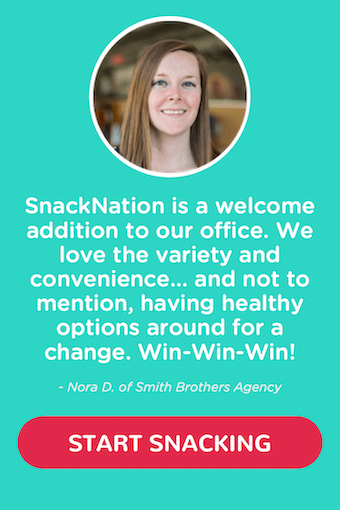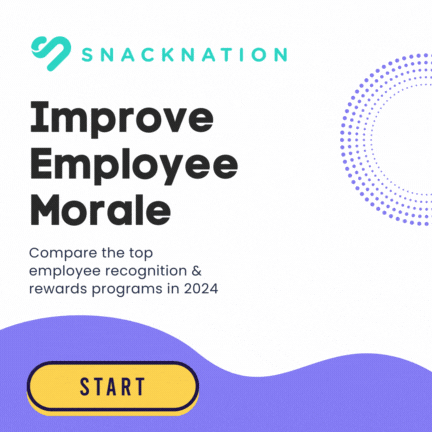
Hounded by the constant demands and relentless distractions of the digital era, we all want to take charge of our time without sacrificing the quality of our output.
The biggest achievers consistently excel because they use a proven system of productivity hacks to slay distractions and get more done with less time or effort.
Explore how they do it with our handpicked collection of the absolute best productivity hacks!
Page Contents (Click To Jump)
Why Are Productivity Hacks Important?
Productivity hacks have the potential to deliver the following outcomes:
- Psychological switch – Knowing a better and faster way to do things can help you get into beast mode.
- A proven system — No more second-guessing or procrastination. You’ll have more confidence to overcome stress, feeling overwhelmed, and burnout when you know you have a proven system.
- Better organization and improved efficiency — Wading through countless tools, to-do lists, and meandering processes will be a thing of the past. Use productivity hacks to declutter your mind and focus on the essentials.
- The confidence and trust of clients and stakeholders – Clients and stakeholders are more likely to trust in your abilities if you can deliver on time repeatedly. If it looks like you can’t handle the pressure, they’ll move on to other providers. Quickly.
31 Unbeatable Productivity Hacks

The best productivity hacks have been modeled after the masters—people who’ve already successfully implemented the hacks.
This roundup of productivity hacks we’ve curated are tried-and-tested strategies proven to deliver results!
1. Pomodoro Technique ⏰
The Pomodoro technique is a time-management tool that involves breaking down workday schedules into shorter, intensive sprints with small breaks. Think 25 minutes of focused work followed by 5-minute break intervals.
👉 Who would this benefit? The technique is best for people with short attention spans or a tendency to fall into procrastination mode. It helps chronic procrastinators and people struggling to focus tame both monsters because:
a) Each task is no longer a mammoth mountain to scale.
b) You’re not chained to your desk for hours at a stretch.
✅ How to use it: Decide on a single task you want to accomplish. If you have a big project, divide it into smaller tasks and pick one. Set your kitchen or mobile timer for 25 minutes and dive right in. Take a break for up to 5 minutes. Rinse and repeat for a maximum of four times. It’s a fantastic tool to get more focused, minus the burnout.
🔥 Hot Tip! Check out our lists of recommended books to help you master both time management and productivity.
2. ABC Prioritization 🔤
The ABC prioritization method is a tool to prioritize your tasks in order of importance or urgency. It’s your go-to if you can’t decide what to do first.
👉 Who would this benefit? People who have difficulties deciding what to do first. Or if you spend time on not-so-important tasks that aren’t impressing your boss.
✅ How to use it: Choose between sets of three tasks by designating them with the letters A, B, and C. A is the highest-priority item, while B falls in the middle, and C is the least-priority item:
➡️ A – Very urgent tasks with deadlines
➡️ B – No deadlines, but must be completed as soon as possible
➡️ C – Not that important in the grand scheme of things. You can get around to it when you have some time freed up.
3. Nature Sounds Focus 🍃
As early as 2015, researchers found that playing nature sounds like flowing water at the workplace, which could improve your moods and boost cognitive abilities like logical reasoning and critical thinking—skills that can improve your efficiency by leaps and bounds.
👉 Who would this benefit? Growth-minded people who are looking for serenity in any setting.
✅ How to use it: Look up YouTube or related apps to find nature sounds that you can play softly in the background. They should be loud enough to hear, but not so loud that it distracts you.
Want more productivity tips that get delivered straight to your inbox? Don’t miss our list of the best email newsletters for peak productivity.
4. Sleep and Exercise 😴
Poor sleep can result in an estimated $44.6 billion in lost productivity each year. According to the Centers for Disease Control and Prevention (CDC), “Physical activity can help you think, learn, problem-solve, and enjoy an emotional balance. It can improve memory and reduce anxiety or depression.”
👉 Who would this benefit? Sleep and exercise yield profound benefits for mental and physical health. A boost in productivity is simply the icing on the cake.
✅ How to use it: Refer to this list for 17 tips to help you sleep better at night. Good sleep will help you wake up feeling rested and wide awake. Exercise can be easily incorporated into your lifestyle; start with 15 minutes before working up to at least 30 minutes daily.
5. Deep Breathing Breaks 😮💨
In an article by the Harvard Business Review, breathing modulation is an effective mood management method. Your breath is “irregular, short, fast, and shallow” when stressed or angry. When you’re happy, your breath is “regular, deep, and slow.” Brownie points if you can guess which type of breathing is ideal for productivity!
👉 Who would this benefit? People who’re high-strung or get easily worked up. You could even be a person who has a lot of stress to deal with.
“Take a deep breath. Inhale peace. Exhale happiness.” – A.D. Posey, author. Share on X
✅ How to use it: Well-being and productivity apps, podcasts, and YouTube videos have plenty of deep-breathing guided meditations at various lengths. Use a deep breathing break to soothe frazzled brain cells and freshen up for your next Pomodoro sprint!
🔥 Pro-Tip from The Assist: Deep breathing is a skill that gets better with time. Consistent practice can help you achieve a calm state faster. You’ll also be able to carry that state into your work life.
6. Energy Batching ✨
Energy batching is simply taking care of all your most challenging tasks at once during the time of the day when you’re most productive. This way, when your energy levels slump, you can more easily tackle tasks requiring less effort or thought.
👉 Who would this benefit? People whose energy levels vary throughout the day.
✅ How to use it: Review your tasks for the next day. Pick out the ones that look the most complicated. Allocate these for your peak productivity hours. Set aside the easiest ones for the remainder of the day.
7. Weekly Workspace Cleaning 🧽
Having a clean workspace can make you feel most productive. Clean workspaces have less clutter and appear organized, so you’re less distracted and can find things more easily. Your physical health will also benefit from the cleaner air.
👉 Who would this benefit? People who tend to have cluttered desk spaces and waste a lot of time looking for things.
✅ How to use it: It’s a good idea to block off some time weekly to clean out your workspace. Aside from tidying up, make it a habit to categorize and store objects so you can easily find them without rummaging through tons of clutter. You’ll save a lot of time, becoming more productive in the process.
8. Set Boundaries 🙅
Setting boundaries isn’t just about protecting your time; it’s also about protecting your energy. Once you set them, be consistent with enforcing them.
👉 Who would this benefit? People-pleasers, entrepreneurs, managers, and employees who habitually overextend and burn out as a result.
✅ How to use it: Client-facing roles often come with a lot of demands. Set expectations early on by discussing when you will be available for emails, chats, or calls. Share when clients can expect to hear back from you, either within an hour, a few hours, or before the end of the day. Also, provide an avenue for them to contact you in an emergency.
9. Keyboard Shortcuts ⌨️
Keyboard shortcuts can help you save so much time. If you haven’t started using them, you’re missing out on a major efficiency booster.
👉 Who would this benefit? People who spend hours daily on their keyboard, drafting presentations, creating content, sorting emails, or managing social media.
✅ How to use it: Check out these resources for keyboard shortcuts you can implement right away:
- 100+ keyboard shortcuts with downloadable PDF
- Essential keyboard shortcuts for programmers
- 111 time-saving keyboard shortcuts for social media managers
10. Take Regular Breaks 🪑
Taking regular breaks can help you release stress, prevent fatigue, restore motivation, and even enhance your creativity!
👉 Who would this benefit? Anyone who spends long hours working.
“Almost everything will work again if you unplug it for a few minutes, including yourself.” – Anne Lamott, author. Share on X
✅ How to use it: Schedule short breaks of 5 minutes in between work sprints of 25 minutes to an hour each.
🔥 Pro-Tip from The Assist: Avoid working more than an hour at a time without taking a break. To maximize your break time, do something physical, like taking a short walk or doing a few stretches.
11. Daily Intentions ⭐
Setting daily intentions can be a powerful way to set goals and generate the positivity and motivation required. In a way, they are a form of self-commitment.
👉 Who would this benefit? People who want to start the day mindfully.
✅ How to use it: Set your daily intentions for productivity as your first task for the day, ideally after you wake up. Check-in with yourself and determine one, two, or a maximum of three key goals you want to accomplish. Jot them down on your laptop or a notebook. Remind yourself to check your progress as you go about your day.
12. Delegate and Outsource 🤝
Delegation and outsourcing both serve a similar purpose. With delegation, you’re assigning tasks from your project to a subordinate or other team member. With outsourcing, external service providers manage specific tasks or projects for you.
👉 Who would this benefit? People who have a hard time relinquishing control. Also, perfectionists believe that if a job has to be done perfectly, it can only be done by you.
✅ How to use it: If you’re serious about becoming an effective people manager, it’s important to master delegation. Resist the need for perfectionism and control when you delegate. Either train people up to the required standard or give experts leeway to bring their creativity and knowledge to complete tasks.
13. Reward Milestones 🏅
Breaking up a project into smaller milestones and rewarding your employees for achieving those milestones is a great way to keep employee morale consistently high. Statistically speaking, more than 80% of employees feel that they would be more engaged if recognized for their contributions.
👉 Who would this benefit? All the team members that work for you!
✅ How to use it: Look at a graded approach to rewards. Start with smaller rewards at the beginning and then more valuable rewards as the employees complete subsequent milestones. Keep the best rewards for successful completion.
🔥 Hot Tip! Looking for reward ideas? Check out our mega-whopper list of 121 ways to reward team members!
14. Remove Distractions 🤓
Distractions are another major productivity drainer that can be harder to deal with. Harder, but not impossible! The best way to eliminate distractions is to mindfully set a goal before you start and then physically remove or mute the distractions themselves.
👉 Who would this benefit? People who are easily distracted. Also, people who want to check one Facebook reel and waste one more hour on more reels!
✅ How to use it: Mute your phone and social media notifications. Communicate when you’ll be available to clients and family members (unless it’s an emergency). Set specific times to check your emails, whether it’s once a day or twice a day.
15. Ergonomic Environment 🗃️
Having an ergonomically designed workspace is a necessity for employee wellness. If your employees are constantly feeling pain and fatigue due to poor posture, suboptimal temperatures, or repetitive movements that are putting a strain on the body, it can affect their mental and physical health.
👉 Who would this benefit? Anyone who spends long hours working.
✅ How to use it: Conduct an ergonomic audit with an expert. Take feedback from your employees. Implementing a small change, like providing an ergonomically designed chair at the right height and with adequate support, can be beneficial. It can do wonders for employee health, with knock-on benefits for employee morale and productivity.
16. Time Audit ⏳
Think of time audits as assessment tools. They help you measure how well you’re using your time. You can then analyze the data to find ways to maximize your output. Regular auditing will help you develop efficiency habits that help you get more done in less time!
👉 Who would this benefit? People who feel like they’re doing a lot but don’t seem to get much done!
✅ How to use it: Follow these steps for a lightning-fast time audit strategy:
- Use time-tracking software or apps for this exercise.
- Set up tasks and categories (email, calls, lunch, etc).
- Set an alarm for every 25 minutes. At the 25-minute mark, note what you’re doing (no cheating!)
- Do this every day throughout the week.
- At the end of the week, analyze your data.
- Identify where you wasted time and where you could have used it better.
- Refine your approach for the next week. Rinse and repeat.
17. Schedule Planning Time 📅
Motivational speaker and best-selling author Brian Tracy says, a “lack of planning is the cause of most failures.” Planning helps you set goals, prioritize tasks, reduce stress, improve creativity, and manage time more effectively. Without a plan, you have no clear goals to work towards, no accountability, and no measure of success.
👉 Who would this benefit? Everyone can benefit from planning their day for maximum productivity.
✅ How to use it: Just as you would set up time for tasks, schedule time blocks daily, weekly, and monthly for planning. List all the goals and tasks you want to accomplish. Organize a to-do list for the day using the ABC framework we discussed earlier. Review wins, challenges, or other disasters. Use this to plan better for the next day, and keep going until planning becomes effortless for you.
18. Upbeat Audio Boost 🎧
If you enjoy listening to music in the background while you’re working, you’re not alone! 94% of employed people choose to listen to music at work. It helps them tune out the outside world and get into the zone for peak productivity.
👉 Who would this benefit? People who enjoy having music in the background while they’re working.
✅ How to use it: There are playlists specifically available for productivity. Keep them running in the background—loud enough to hear but not so loud that it stops you from working! Try the Chill Music Lab on YouTube for the perfect productivity and work mixes!
19. Prioritize Self-care 💅
Self-care is a paramount aspect to prioritize in order to be more productive at work. If you don’t spend enough time caring for yourself, you’re more likely to burn both candles at the ends, wearing yourself out in the process.
👉 Who would this benefit? Super-driven and highly motivated people who find it hard to relax.
✅ How to use it: Ask yourself what self-care means to you. Is it a relaxing spa massage? Spending time with friends? Maybe you want to spend some quiet time at home lounging on the sofa with your dog. Do more of what makes you feel good. Set aside time daily for self-care.
20. Two-Minute Tasks ✌️
If you’re constantly inundated by seemingly small job requests throughout the day, apply the two-minute rule. If it doesn’t fit the two-minute rule, schedule some time in your calendar to complete it. Avoid doing so many ad-hoc small jobs that they start eating away at the work you need to do.
👉 Who would this benefit? People who have a hard time saying no. Also, people who have difficulties effectively managing their time.
“If everything’s a priority, then nothing’s a priority!” – Frank Sonnenberg, author. Share on X
✅ How to use it: Analyze the task you’ve been given and decide if you can complete it in two minutes or less. Only do it if it meets the criteria. If it doesn’t, block time for it afterward.
🔥 Pro-Tip from The Assist: The two-minute rule can help you quickly prioritize tasks if delivering volumes is critical to your business area.
21. Visualization 🔎
Visualization is a great tool to get into the zone, especially if you do it consistently over time. Ideally, use visualization methods that help you use all of your senses, such as smell, hearing, and touch, to embed your goals in your subconscious mind.
👉 Who would this benefit? Anyone who enjoys meditative practices for goal focus and manifestation.
✅ How to use it: Set a goal in your mind, whether that’s success, fame, money, or simply all! Set aside time immediately after you wake up to practice your visualization. Pick a guided visualization meditation from YouTube that you can follow and practice daily. Keep a journal to record your feelings and your progress.
22. Refreshing Walk Breaks 🚶
Just 15 minutes of walking can help improve your health and longevity. Why not convert your work breaks to refreshing outdoor walk breaks?
👉 Who would this benefit? People who spend long hours indoors hunched over their desks.
✅ How to use it: Plan to walk during your breaks. It’s the easiest way to get some exercise into your day. If you’re walking every time you have a break, you could exercise for at least 30 minutes without a concerted effort!
23. Inbox Zero 📥
Contrary to popular belief, “inbox zero” isn’t about keeping your inbox as close to zero emails as possible (although that’s a worthy mini-goal to aspire to). It’s about how much time your brain is invested in your mailbox.
👉 Who would this benefit? People for whom email management is their number-one productivity blocker. That could be you as well as your employees.
✅ How to use it: Easy. Follow our comprehensive guide to managing your inbox like a ninja!
Speaking of employees, here are some recommended resources to help your employees work through productivity blocks!
- How to improve team productivity.
- Best employee productivity software designed to optimize team performance.
24. Deep Work Blocks 🗓️
Deep work blocks are a time-scheduling method slightly different from the Pomodoro technique. The Pomodoro technique emphasizes short sprints of approximately 25 minutes each. Deep work blocks, on the other hand, involve blocking 60-90-minute blocks for challenging tasks.
👉 Who would this benefit? People who prefer to work for 1 to 2-hour periods as opposed to 25-minute stretches.
✅ How to use it: Schedule and start working with it! If you find the Pomodoro system too superficial and distracting for in-depth and complex tasks, you may benefit from longer sprints in the form of deep work blocks.
25. Stay Hydrated 🥤
Research tells us that even mild hydration—a body water loss of 1–2%—can impair physical and cognitive performance. So, if you want to boost productivity, drink up!
👉 Who would this benefit? Water is essential for life. Over and above productivity, it’s necessary to help the body perform key processes essential for thinking, breathing, digesting food, working, sleeping, protecting against illness, and so much more.
“Water is the most neglected nutrient in your diet but one of the most vital.” – Kelly Barton Share on X
✅ How to use it: The amount of water you need can vary from person to person. The national recommended allowance is approximately 15.5 cups or 3.7 liters of fluid per day for men and 11.5 cups or 2.7 liters per day for women. Carry water in a bottle that you can guzzle throughout the day. You can also soak fruit slices to add a delicious fruity flavor to your water.
🔥 Pro-Tip from The Assist: Make it a habit to drink a glass of water when you wake up. Also, practice drinking at least two glasses of water before your meals. If you’re struggling to keep track of your water consumption, use a smartphone app to help alert you when it’s time to hydrate.
26. Timer Focus ⏲️
Timer focus is probably the easiest way to get time-efficient. Use a regular table-top, watch, or app timer to set time limits for each task you’ve planned for your day. Keeping a timer helps you stay accountable. You know you have to complete what you have in hand before the timer starts to go off next!
👉 Who would this benefit? Solopreneurs or people who work from home.
✅ How to use it: Schedule short breaks of 5 minutes in between work sprints of 25 minutes to an hour each.
27. Alternate Task Types 📌
Look at visual methods of task organization to improve productivity. Visual media is easier to understand, recognize, and implement. They can be just as beneficial for team productivity.
👉 Who would this benefit? Most people engage better with visual tools and templates.
✅ How to use it: Look for different tools and software to help you organize tasks in a visual format. It can save you a considerable amount of time in comparison with text-based content.
28. Avoid Multitasking 📚
Multitasking is a proven productivity drainer. It distracts you, slows you down, and increases your propensity for making mistakes, especially with more complex or complicated work projects. It’s a habit you can do without.
👉 Who would this benefit? People who, sometimes unconsciously, value speed over productivity or take on more tasks than they should. It can also benefit easily distracted people, as it forces them to slow down and concentrate.
✅ How to use it: Focus on one task for short periods of time (use the Pomodoro technique described earlier in this article). Eliminate distractions, especially social media notifications. Take on only as many tasks as you can realistically handle. Take deep breathing breaks to help you center and concentrate on one task at a time.
29. Weekly Reviews 📆
Weekly reviews are a powerful tool to enhance productivity. They’re a way to check in and identify roadblocks to progress.
👉 Who would this benefit? Anyone serious about maximizing productivity.
✅ How to use it: Schedule time once a week, preferably on the weekend, to review what you did Ideally, combine the review with your planning notes from earlier. Identify what you did well. Where can you improve? What were your biggest pain points? The answers to these questions can help you clarify how to organize yourself better for the next week.
30. Automate Repetitive Tasks 🖥️
Want to spend less time on time-consuming and labor-intensive tasks when you should be focusing on relationship-building and driving sales? Automation can be a complete game changer.
👉 Who would this benefit? Spending a lot of time on repetitive tasks may contribute, but it doesn’t drive the bottom line.
“Workflow automation is about maximizing efficiency, but it's also about creating a better experience for employees and customers.” — James K. McPartland, author, speaker, and coach. Share on X
✅ How to use it: Decide what tasks you need to automate and the goals you want to achieve through automation. Research different types of software and tools you can use to help you automate all your repetitive processes. Here are a few guides to help you get started:
- 15 Best Employee Productivity Software Platforms For Teams
- 10 Must-Have Team Productivity Tools for Team Success in 2024
- Top 10 Best Productivity Tools for Working from Home
- 28 Workplace Apps For Productive Teams
- 49 Best Online Collaboration Tools & Software Platforms For Business Teams
🔥 Pro-Tip from The Assist: Implementing automation can also serve your clients well because they don’t have to contend with lengthy, arduous manual tasks. You can focus on building client relationships instead of wasting time on to-do lists.
31. Incremental Changes 📊
It can be overwhelming when you try to implement a major productivity hack or multiple hacks simultaneously. Instead, opt for small and incremental changes over time.
👉 Who would this benefit? Planners who don’t like sudden changes or big surprises. Also, people who like to work slowly but methodically.
✅ How to use it: Implement the easiest productivity hack from this list tomorrow. Observe how it makes you feel. If you successfully integrate it, add another small productivity hack for next week. Rinse and repeat until you implement enough positive changes to see tangible improvements in your productivity.
Reddit Productivity Thread
One of the best productivity hacks we can’t recommend highly enough is joining a Reddit productivity community or thread. Because Reddit is community-driven, you’ll get to engage with others who’ve walked down the path before and get solid insights into how you can improve your efficiency.
Try this Reddit thread for underrated productivity hacks that everyone should know. Some gems we found here:
- Set action goals instead of outcome goals. “Totally changed my life.” – [jamalccc]
- Dressing for your tasks: “If you dress lazy, you will likely feel lazy. If you dress for business, you’ll get business done.” – [PutSimply1]
- For the ladies, a menstrual cycle tracking app, so you can plan your work around the times when you have the best moods and the most energy.” – [HerSpheres]
People Also Ask These Questions About Productivity Hacks
Q: How can I implement productivity hacks into my daily workflow?
- A: Start by clarifying priorities and setting tangible goals. Explore techniques like time-blocking and the Pomodoro technique (discussed in this article) to boost productivity and laser-like focus. Implement changes incrementally. Gradually work up to higher doses. Use productivity tools and task-list templates if you’re working as a team. Keep evaluating results and fine-tune your approach accordingly. Remember to prioritize self-care for the best results.
Q: How long will it take for productivity hacks to make a difference?
- A: Timelines can vary depending on the individual. Some people can integrate new habits and tricks into their workflows quickly. Others may need to work productivity hacks into their daily routine gradually. The key is to focus on continuous improvement. Do productivity audits regularly so you’re identifying what works. Eliminate or refine the rest.
Q: Are there any downsides to implementing productivity hacks in my routine?
- A: There’s only a downside if you’re implementing productivity hacks for the sake of implementing them and not for any real business value. Evaluate the benefits first. Implementing productivity hacks shouldn’t come at the cost of your well-being or your work-life balance. They are a means to an end, not the end goal.
Q: How can I keep up these new habits long-term?
- A: Think of keeping up these new productivity habits as a long-term goal. The more time you spend to master productivity, the bigger the payout over time. Set realistic goals and incorporate them incrementally into your daily schedule. Celebrate every small win, and don’t forget to have fun—the more enjoyable they are, the more you’ll want to maintain them.
Q: How do I customize productivity approaches for my energy levels throughout the day?
- A: You may have specific times in your day when you’re the most productive. For some people, that can be early in the morning; for others, it can be well into the evening. Schedule your most demanding tasks for when you’re at peak energy levels. Schedule the less challenging tasks for when your energy levels are naturally lower. Customize your schedule to respect your natural energy rhythms while maintaining maximum productivity.









